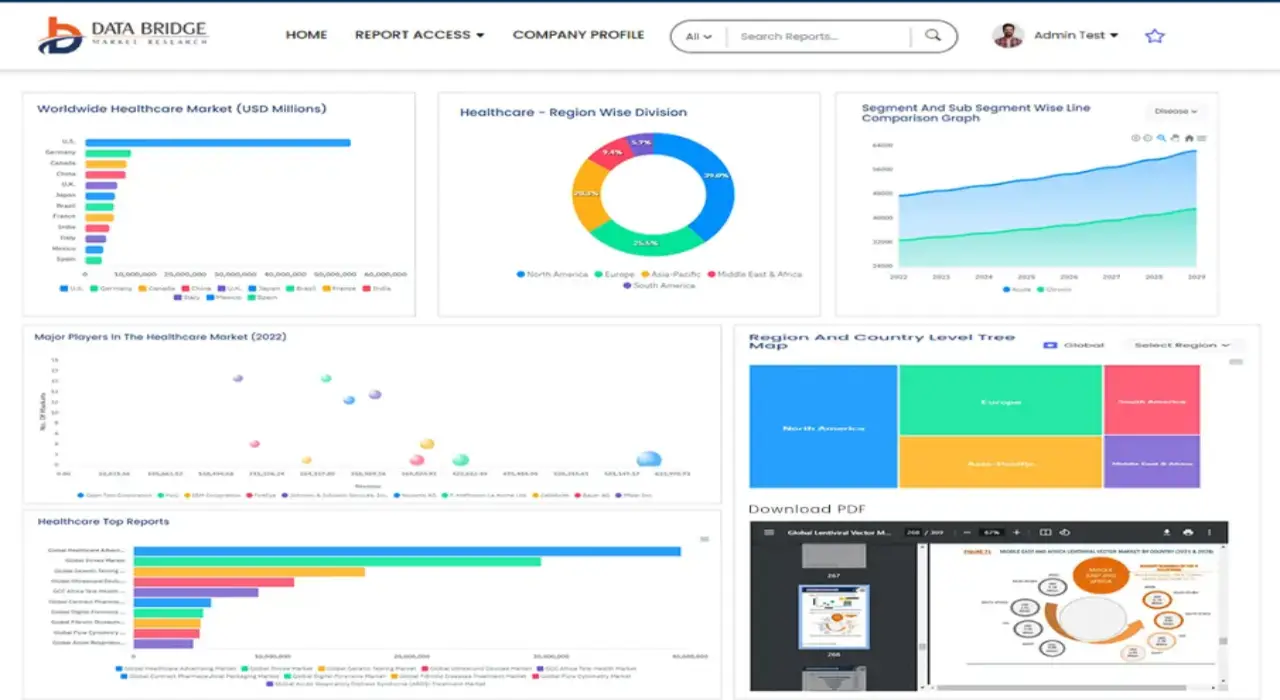Global Surfactant Market
Market Size in USD Billion
CAGR :
% 
 USD
63.37 Billion
USD
89.43 Billion
2024
2032
USD
63.37 Billion
USD
89.43 Billion
2024
2032
| 2025 –2032 | |
| USD 63.37 Billion | |
| USD 89.43 Billion | |
|
|
|
|
Global Surfactant Market Segmentation, By Type (Anionic Surfactants, Non-Ionic Surfactants, Cationic Surfactants, Amphoteric Surfactants, Silicone Surfactants, and Others), Substrate (Synthetic Surfactants and Bio-Based Surfactants), Application (Household Soaps and Detergents, Personal Care, Textile Processing, Industrial and Institutional Cleaning, Mining, Pharmaceuticals, Paints & Coatings, Oilfield Chemicals, Food Processing, Agricultural Chemicals, Pulp & Paper, Leather Manufacturing, Emulsion Polymerization, Foaming Agents, Lubricants and Fuel Additives, Plastics and Elastomers, Adhesives, Electroplating, and Others), Product (Non-Ionic and Amphoteric) - Industry Trends and Forecast to 2032
Surfactant Market Size
- The global surfactant market size was valued at USD 63.37 billion in 2024 and is expected to reach USD 89.43 billion by 2032, at a CAGR of 4.40% during the forecast period
- This growth is driven by factors such as increasing demand from the automotive and construction industries, rising infrastructure development in emerging economies, and the growing focus on corrosion protection and aesthetic finishes for metal surfaces
Surfactant Market Analysis
- Surfactants are surface-active agents used to reduce surface tension between two liquids or a liquid and a solid, playing a crucial role in detergents, emulsifiers, dispersants, and wetting agents across various industries such as personal care, agriculture, textiles, and oil & gas.
- The rising demand for surfactants is significantly driven by the growing use in home and personal care products, increasing consumption in the agricultural sector for pesticide formulations, and expanding applications in the oilfield chemicals and paints & coatings industries.
- Asia-Pacific is expected to dominate the global surfactant market, holding a market share of approximately 42% during the forecast period, fueled by rapid urbanization, population growth, and high consumption of personal and home care products in countries like China and India.
- North America is projected to witness robust growth in the surfactant market, with a market share of around 25% by 2025, driven by innovation in bio-based surfactants, rising demand in industrial cleaning applications, and the presence of major consumer product manufacturers.
- The anionic surfactants segment is expected to dominate the global surfactant market with the largest share of over 40% in 2025, owing to their extensive use in laundry detergents, shampoos, and household cleaning products due to their effective cleaning and foaming properties
Report Scope and Surfactant Market Segmentation
|
Attributes |
Surfactant Key Market Insights |
|
Segments Covered |
|
|
Countries Covered |
North America
Europe
Asia-Pacific
Middle East and Africa
South America
|
|
Key Market Players |
|
|
Market Opportunities |
|
|
Value Added Data Infosets |
In addition to the insights on market scenarios such as market value, growth rate, segmentation, geographical coverage, and major players, the market reports curated by the Data Bridge Market Research also include import export analysis, production capacity overview, production consumption analysis, price trend analysis, climate change scenario, supply chain analysis, value chain analysis, raw material/consumables overview, vendor selection criteria, PESTLE Analysis, Porter Analysis, and regulatory framework. |
Surfactant Market Trends
“Rising Demand for Eco-Friendly and High-Performance Surfactants”
- One prominent trend in the global surfactant market is the increasing shift toward eco-friendly and sustainable surfactants, driven by consumer preference for environmentally conscious products and the growing demand for renewable and biodegradable materials
- These surfactants, made from renewable resources, are not only more environmentally friendly but also offer high performance, making them attractive for industries like personal care, home care, and industrial applications
- For instance, In March 2024, BASF launched a new range of biodegradable surfactants derived from renewable sources, aimed at reducing the environmental impact of household and industrial cleaning products
- The emphasis on developing multifunctional surfactants that provide higher performance, lower environmental impact, and greater cost-effectiveness is reshaping the market. Manufacturers are investing in innovation to meet regulatory standards while addressing the increasing demand for sustainable products
Surfactant Market Dynamics
Driver
“Rising Demand for Environmentally Friendly and Biodegradable Surfactants”
- The growing emphasis on sustainability and environmental concerns is significantly driving the global surfactant market, as industries seek eco-friendly alternatives to traditional surfactants in applications such as detergents, personal care, and industrial cleaning
- As consumers and companies increasingly prioritize environmentally responsible products, the demand for biodegradable surfactants is rising, as these products are safer for the environment and reduce the risk of pollution
- The shift towards green chemistry and sustainable manufacturing practices is encouraging companies to innovate and develop surfactants that meet strict environmental regulations and standards
For instance,
- In March 2024, Clariant introduced a new line of biodegradable surfactants made from renewable sources, catering to the personal care and home care markets, aligning with the rising demand for sustainable ingredients in consumer products
- As awareness of the environmental impact of conventional surfactants grows, demand for these eco-friendly alternatives is expected to continue driving market growth, particularly in regions with strict environmental policies such as Europe and North America
Opportunity
“Surge in Demand for Bio-Based and Sustainable Surfactants”
- The growing emphasis on sustainability and the shift towards bio-based raw materials presents a significant opportunity for growth in the global surfactant market, as industries increasingly seek eco-friendly alternatives to traditional petrochemical-based surfactants
- Bio-based surfactants, which are derived from renewable resources like plant oils and sugars, are gaining traction due to their lower environmental impact, biodegradability, and compliance with sustainability standards in sectors such as personal care, household products, and industrial cleaning
- As consumer preferences for natural and organic products continue to rise, especially in developed markets, the demand for sustainable and bio-based surfactants is expected to grow, offering opportunities for manufacturers to develop products that meet both performance and environmental requirements
For instance,
- In March 2024, BASF launched a new line of bio-based surfactants made from renewable plant materials, targeting the personal care and home care markets, meeting the increasing demand for sustainable ingredients in consumer products
- The global trend towards eco-consciousness, coupled with stricter environmental regulations, is providing manufacturers with opportunities to innovate and cater to the demand for high-performance, bio-based surfactants that support sustainability goals
Restraint/Challenge
“High Cost of Biodegradable and Sustainable Surfactants Limiting Widespread Adoption”
- The high cost of producing biodegradable and sustainable surfactants presents a significant challenge for the global surfactant market. This is especially problematic for small and medium-sized enterprises (SMEs) and companies in emerging markets with limited budgets for innovation and ingredient sourcing
- Sustainable surfactants, often derived from renewable sources like plant oils, tend to be more expensive than traditional petrochemical-based alternatives. This cost disparity can make it difficult for manufacturers, especially in price-sensitive industries, to adopt these environmentally friendly alternatives at scale
- The cost of raw materials and the more complex production processes involved in creating bio-based surfactants contribute to their higher prices, which can limit their widespread adoption, especially in sectors such as cleaning, personal care, and industrial applications
For instance,
- In February 2024, a report from Croda International Plc indicated that while the demand for bio-based surfactants is rising, the high cost of production and the complexity of scaling these technologies remain significant barriers for small manufacturers, particularly in the household and industrial cleaning markets
- As a result, many companies in these sectors continue to rely on more affordable, traditional surfactant solutions, which can limit the growth potential of the sustainable surfactant market, particularly in price-sensitive regions
Surfactant Market Scope
The market is segmented on the basis type, substrate, application and product.
|
Segmentation |
Sub-Segmentation |
|
By Type |
|
|
By Substrate |
|
|
By Application |
|
|
By Product
|
|
In 2025, the anionic surfactant is projected to dominate the market with a largest share in type segment
The anionic surfactant segment is expected to dominate the global surfactant market with the largest share of 39.25% in 2025, driven by its widespread use in industries such as cleaning, personal care, and home care. Anionic surfactants are known for their strong cleaning power, foaming ability, and effectiveness in emulsifying oils and dirt, making them essential for products like laundry detergents, shampoos, and dishwashing liquids. As consumer demand for efficient and high-performance cleaning products continues to grow, the use of anionic surfactants remains a key driver
The agricultural chemicals is expected to account for the largest share during the forecast period in technology segments
The agricultural chemicals segment is expected to dominate the global surfactant market with the largest market share in 2025, driven by the increasing demand for efficient crop protection and sustainable farming practices. Surfactants play a crucial role in enhancing the effectiveness of agrochemicals such as herbicides, fungicides, and insecticides by improving their spreading, wetting, and penetration on plant surfaces. This leads to better pest and disease control, contributing to higher crop yields and quality. The growing global population and the consequent need for increased food production are propelling the use of surfactants in agriculture
Surfactant Market Regional Analysis
“Asia-Pacific Holds the Largest Share in the Surfactant Market”
- Asia-Pacific is expected to dominate the global surfactant market, holding a 36% share during the forecast period, driven by rapid industrialization, population growth, and expanding end-use industries such as personal care, home care, agriculture, and textiles
- China account for over 15.2% of the global surfactant market, fueled by the rising consumption of household cleaning agents, personal care products, and agrochemicals. The presence of cost-effective manufacturing facilities and increasing demand for surfactants in both domestic and export markets further supports regional dominance
- The growing shift toward biodegradable and bio-based surfactants in countries such as Japan, South Korea, and Australia is also contributing to market growth, in line with environmental sustainability goals
- For instance, in February 2024, Galaxy Surfactants expanded its production capacity in India to meet rising global demand, reinforcing Asia-Pacific’s leadership in the global surfactant market
- In addition, regional players and multinational companies are investing in R&D and production expansion
“North America is Projected to Register the Highest CAGR in the Surfactant Market”
- North America is projected to witness robust growth in the global surfactant market, with a market share of around 25% by 2025, driven by innovation in bio-based surfactants, rising demand in industrial cleaning applications, and the strong presence of major consumer product manufacturers
- The U.S., as the leading market in the region, benefits from advanced R&D infrastructure, regulatory support for sustainable chemicals, and a mature personal care and home care industry driving the adoption of high-performance surfactants.
- The growing shift toward environmentally friendly and biodegradable surfactants is further supported by federal and state-level regulations encouraging greener formulations.
- In addition, major companies such as Dow, Stepan Company, and BASF are investing in technological advancements and sustainable production practices, reinforcing North America’s position as the fastest-growing region in the surfactant market
Surfactant Market Share
The market competitive landscape provides details by competitor. Details included are company overview, company financials, revenue generated, market potential, investment in research and development, new market initiatives, global presence, production sites and facilities, production capacities, company strengths and weaknesses, product launch, product width and breadth, application dominance. The above data points provided are only related to the companies' focus related to market.
The Major Market Leaders Operating in the Market Are:
- Dow (U.S.)
- BASF SE (Germany)
- Sasol Ltd. (South Africa)
- Evonik Industries AG (Germany)
- KLK OLEO (Malaysia)
- Indorama Ventures Public Company Limited (Thailand)
- Kao Corporation (Japan)
- Reliance Industries Limited (India)
- Arkema (France)
- Godrej Industries Limited (India)
- Cargill, Incorporated (U.S.)
- Clariant (Switzerland)
- China Petrochemical Corporation (Sinopec) (China)
- Stepan Company (U.S.)
- Lion Corporation (Japan)
- Aarti Industries Ltd. (India)
- ADEKA CORPORATION (Japan)
- Nouryon (Netherlands)
- The Lubrizol Corporation (U.S.)
- Lonza (Switzerland)
- SABIC (Saudi Arabia)
- Sumitomo Chemical Co., Ltd. (Japan)
- Cepsa (Spain)
- Bayer AG (Germany)
- SANYO CHEMICAL INDUSTRIES, LTD. (Japan)
- Croda International Plc (U.K.)
- Zanyu Technology Group (China)
- Ashland (U.S.)
- GALAXY (India)
- EOC Group (Belgium)
- Lankem (U.K.)
- DKS Co. Ltd. (Japan)
- STOCKMEIER Group (Germany)
- Vantage Leuna GmbH (Germany)
- TAIWAN NJC CORPORATION (Taiwan)
- SulfaTrade SA (Switzerland)
- 3M (U.S.)
- Pilot Chemical Corp. (U.S.)
- GEO (U.S.)
- Fogla Group (India)
- Goulston (U.S.)
- Syensqo (Belgium)
- TENSAC (U.S.)
- ABITEC (U.S.)
- Matangi Industries (India)
Latest Developments in Global Surfactant Market
- In April 2024, Nouryon introduced Structure M3 co-surfactant, a groundbreaking biodegradable personal care technology designed to enhance mildness, cleansing efficacy, and foaming performance in formulations like shampoos, facial cleansers, and body washes. This innovation significantly reduces irritation associated with traditional surfactant systems, ensuring a gentler experience for consumers.
- In January 2024, Evonik Industries AG was honored with the European Responsible Care Award for its groundbreaking glycolipid biosurfactants. Winning in the "Safe and Sustainable Chemicals" category, Evonik was recognized for its innovative glycolipid technology and commitment to sustainability. As a pioneer in the field, Evonik developed an IP-protected, industrial-scale biotechnological process for producing biodegradable, high-purity rhamnolipid biosurfactants, addressing the growing market demand for eco-friendly, high-performance surfactants
- In October 2023, Sasol Chemicals introduced CARINEX and LIVINEX, two new brands expanding its sustainable product portfolio. These biosurfactants—CARINEX SL and LIVINEX SL—are designed for personal care and home cleaning applications, offering biodegradable, eco-friendly solutions. CARINEX targets scalp and skin care, while LIVINEX focuses on household cleaning, both utilizing fermentation-derived sophorolipids to reduce environmental impact
- In October 2023, Ashland launched Easy-Wet substrate wetting agents, a breakthrough in silicone-free, high-performance oligomeric alkyl polyether polyols for premium industrial coatings. This innovation enhances substrate wetting, ensuring defect-free films with low foam stabilization, preventing cratering and pinholes. The Easy-Wet portfolio offers precise formulation control, making it ideal for applications in wood, metal, automotive, general industrial finishes, printing inks, and plastic coatings
- In January 2023, Holiferm Limited and Sasol Chemicals expanded their collaboration to develop and market rhamnolipids and mannosylerythritol lipids (MELs), reinforcing their commitment to sustainable biosurfactants. This agreement builds upon their March 2022 partnership, which focused on sophorolipids, another fermentation-derived biosurfactant. Leveraging Holiferm’s proprietary technology, the companies aim to commercialize formulations and applications for these innovative compounds, offering eco-friendly alternatives for detergents, cleaning products, and personal care items
SKU-
Get online access to the report on the World's First Market Intelligence Cloud
- Interactive Data Analysis Dashboard
- Company Analysis Dashboard for high growth potential opportunities
- Research Analyst Access for customization & queries
- Competitor Analysis with Interactive dashboard
- Latest News, Updates & Trend analysis
- Harness the Power of Benchmark Analysis for Comprehensive Competitor Tracking
Global Surfactant Market, Supply Chain Analysis and Ecosystem Framework
To support market growth and help clients navigate the impact of geopolitical shifts, DBMR has integrated in-depth supply chain analysis into its Global Surfactant Market research reports. This addition empowers clients to respond effectively to global changes affecting their industries. The supply chain analysis section includes detailed insights such as Global Surfactant Market consumption and production by country, price trend analysis, the impact of tariffs and geopolitical developments, and import and export trends by country and HSN code. It also highlights major suppliers with data on production capacity and company profiles, as well as key importers and exporters. In addition to research, DBMR offers specialized supply chain consulting services backed by over a decade of experience, providing solutions like supplier discovery, supplier risk assessment, price trend analysis, impact evaluation of inflation and trade route changes, and comprehensive market trend analysis.
Research Methodology
Data collection and base year analysis are done using data collection modules with large sample sizes. The stage includes obtaining market information or related data through various sources and strategies. It includes examining and planning all the data acquired from the past in advance. It likewise envelops the examination of information inconsistencies seen across different information sources. The market data is analysed and estimated using market statistical and coherent models. Also, market share analysis and key trend analysis are the major success factors in the market report. To know more, please request an analyst call or drop down your inquiry.
The key research methodology used by DBMR research team is data triangulation which involves data mining, analysis of the impact of data variables on the market and primary (industry expert) validation. Data models include Vendor Positioning Grid, Market Time Line Analysis, Market Overview and Guide, Company Positioning Grid, Patent Analysis, Pricing Analysis, Company Market Share Analysis, Standards of Measurement, Global versus Regional and Vendor Share Analysis. To know more about the research methodology, drop in an inquiry to speak to our industry experts.
Customization Available
Data Bridge Market Research is a leader in advanced formative research. We take pride in servicing our existing and new customers with data and analysis that match and suits their goal. The report can be customized to include price trend analysis of target brands understanding the market for additional countries (ask for the list of countries), clinical trial results data, literature review, refurbished market and product base analysis. Market analysis of target competitors can be analyzed from technology-based analysis to market portfolio strategies. We can add as many competitors that you require data about in the format and data style you are looking for. Our team of analysts can also provide you data in crude raw excel files pivot tables (Fact book) or can assist you in creating presentations from the data sets available in the report.














